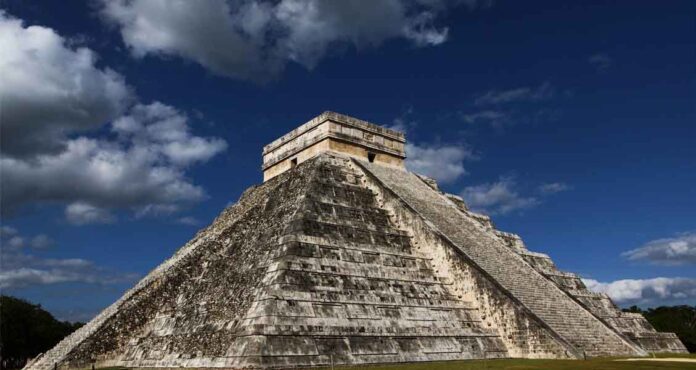The term Early Postclassic, defined between 900 AD and 1,200 AD, is of utmost importance, as it symbolizes the continuity of the Mayan Civilization after the Classic collapse.
Apart from the Northern Lowlands, not many sites are known from this time, probably due to the effects of many migrations out of Petén.
However, there is no evidence that mass movements of people have occurred in the Highlands, suggesting that current Mayan populations are descendants of the same groups that settled before the Postclassic.
In this aspect, the Mayan sites must be contextualized within the Mesoamerican sphere, because the Early Postclassic is the period called “Toltec”, where an “international” artistic style predominated, reflected in architecture, ceramics and sculpture.
However, the word Toltec has a strong mythological meaning, since tula or tollan is the name of the place of origin of many peoples.
Therefore, this Toltec influence should be understood as a process similar to what happened with the Olmecs during the Middle Preclassic and with the Teotihuacanos in the Early Classic, and not as conquests or migrations coming from a single place.
In any case, what is clear in this period is the disappearance of the monarchical system of the Classic, which was replaced by governments based on confederations and/or councils, where the lineage was the basic unit of the sociopolitical organization.
The concentration of populations in the Northern Highlands was largely due to the rise of the trade route that surrounded the Yucatan Peninsula, considerably transforming economic patterns.
For example, it is notable that jade declined as a luxury element, which was relatively replaced by gold, turquoise and other materials from northwestern Mesoamerica.
Finally, the Late Postclassic It represents the last moment of the pre-Hispanic Mayan culture, which begins in 1,200 AD and ends with the different processes of conquest throughout the entire region.
This period is characterized by the disappearance of large territorial states in the Lowlands, as the territory was fragmented into many provinces, governed by smaller-scale capitals.
On the contrary, strong political entities were consolidated in the Highlands, which achieved an unprecedented territorial expansion, to such a degree that they conquered and integrated several different ethnic groups under their control.
However, the conflicts between these groups were used by the conquerors as an effective means for their eventual defeat and domination in the 16th century.
At the same time, the Mayan groups of the Gulf Coast enjoyed a period of prosperity, thanks to their dominance of the sea routes and the direct contact they had with the Aztecs. That is why they managed to confront the Spanish with a high degree of resistance.




